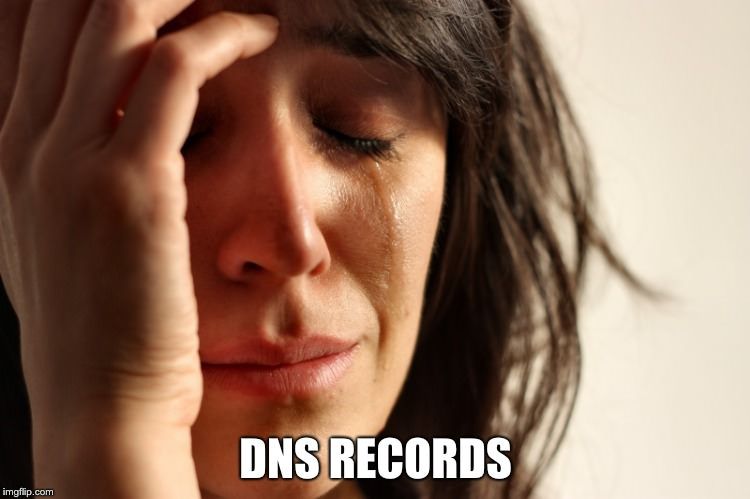Response: Australian Encryption Laws Explained

Stilgherrian is a long time IT journalist in Australia and trustworthy source for news. This article details the laws that Australia has passed.
The post Response: Australian Encryption Laws Explained appeared first on EtherealMind.
Tools: Dark Mode Chrome Extension

“Eye Care” Add dark mode to Chrome via extension. Source seems to check out. Source Web Site: Dark Reader – https://darkreader.org/ Also has extension for Firefox and Safari. Link: Dark Reader – Chrome Web Store – https://chrome.google.com/webstore/detail/dark-reader/eimadpbcbfnmbkopoojfekhnkhdbieeh/related Side Note: All those years of brightest possible monitors declaiming about number of NITS a screen and now […]
The post Tools: Dark Mode Chrome Extension appeared first on EtherealMind.
Enhance Security with NSX Cloud and Horizon Cloud on Microsoft Azure
While virtual desktops have successfully helped address security and operational challenges, IT organizations still have concerns about a growing threat landscape and an expanded security perimeter that they need to protect, especially in public cloud environments. Malware, phishing, and other emerging advanced threats can be used to compromise a virtual desktop to serve as jumping off point for an attacker to move laterally into the rest of the network. Until now, customers could secure their VMware Horizon deployments in on-premises data centers with VMware NSX. We are happy to announce that NSX can now also secure virtual workloads deployed by VMware Horizon Cloud on Microsoft Azure, providing a more robust security posture in cloud-hosted virtual desktop environments in Microsoft Azure.
It’s been a great year for Horizon Cloud on Microsoft Azure. This service offering allows customers to easily pair their own Microsoft Azure capacity with the intuitive Horizon Cloud control to quickly deliver virtual desktops and apps to end-users in a matter of hours. There is a lot of momentum from customers as they adopt Horizon Cloud to deliver virtual desktops and application from their own Microsoft Azure infrastructure to any device, anywhere.
One of the key features of the Continue reading
Some Random Thoughts From Security Field Day
I’m spending the week in some great company at Security Field Day with awesome people. They’re really making me think about security in some different ways. Between our conversations going to the presentations and the discussions we’re having after hours, I’m starting to see some things that I didn’t notice before.
- Security is a hard thing to get into because it’s so different everywhere. Where everyone just sees one big security community, it is in fact a large collection of small communities. Thinking that there is just one security community would be much more like thinking enterprise networking, wireless networking, and service provider networking are the same space. They may all deal with packets flying across the wires but they are very different under the hood. Security is a lot of various communities with the name in common.
- Security isn’t about tools. It’s not about software or hardware or a product you can buy. It’s about thinking differently. It’s about looking at the world through a different lens. How to protect something. How to attack something. How to figure all of that out. That’s not something you learn from a book or a course. It’s a way of adjusting your Continue reading
Weekly Show 420: Real-World Network Design Part 2
The Weekly Show returns to the University of Idaho to continue the real-world network design session we started in Show 418. Today's episode focuses on the university's wireless architecture and design with guests Brian Jemes, Mike Rusca, and Jake Snyder. We cover 5Ghz, PoE, next-gen APs, and more.
The post Weekly Show 420: Real-World Network Design Part 2 appeared first on Packet Pushers.
SDxCentral Weekly Wrap: Verizon Entices 10,400 Workers to Take Severance Package
 SDxCentral Weekly Wrap for December 14, 2018: IHS SD-WAN report showed 23 percent revenue surge, VMware paid $550 million for Kubernetes boost from Heptio, and more of what you missed this week.
SDxCentral Weekly Wrap for December 14, 2018: IHS SD-WAN report showed 23 percent revenue surge, VMware paid $550 million for Kubernetes boost from Heptio, and more of what you missed this week.
VMware Cloud on AWS with NSX-T SDDC – Connectivity, Security, and Port Mirroring Demo
VMware Cloud on AWS with NSX-T SDDC – Networking and Security
Watch the embedded demo below or view on the NSX YouTube channel here to see several cool NSX-T networking and security capabilities within VMware Cloud on AWS. The demo shows connectivity from VMware Cloud on AWS SDDC to on-prem via AWS Direct Connect Private VIF. Access to native AWS services from VMware Cloud on AWS SDDC is also shown. Additionally, Edge security policies, distributed firewall/micro-segmentation, and port mirroring are demonstrated. Continue reading
KubeCon Showed Kubernetes’ Power and Challenges
 CNCF claimed 8,000 attendees and an additional 2,000 that were on a waitlist to attend this week's event. I think those on the waitlist snuck in.
CNCF claimed 8,000 attendees and an additional 2,000 that were on a waitlist to attend this week's event. I think those on the waitlist snuck in.
SK Telecom Firms Up 5G Mobile Edge Partnership With Deutsche Telekom
 The South Korean carrier is to partner with MobiledgeX, building on the deal signed with DT in October 2018.
The South Korean carrier is to partner with MobiledgeX, building on the deal signed with DT in October 2018.
SDxCentral’s Weekly Roundup — December 14, 2018
 Amazon Web Services opens in Sweden; Apple expands across the US; and the Hyperledger project expands its membership.
Amazon Web Services opens in Sweden; Apple expands across the US; and the Hyperledger project expands its membership.
JEDI Wars: Amazon Web Services Strikes Back
 AWS argues that it has a “direct and substantial economic interests at stake.” It says Oracle’s conflict-of-interest accusations are “meritless.”
AWS argues that it has a “direct and substantial economic interests at stake.” It says Oracle’s conflict-of-interest accusations are “meritless.”
Bridging the Gender Gap in Serbia

We are delighted that our project, Digitally Unconnected Gender Gap (DUGG) has been chosen by the Internet Society as part of the Beyond the Net Funding Programme to work on digital gender issues in Serbia.
The gender digital gap is widely present in Serbia, but the lack of research data and statistics are making this problem invisible, both from the ones dealing with women’s rights, and the ones who are fighting for a just, accessible, and safe Internet for everyone. Our team will connect these two activists’ fields in order to put the light on the issue!
Through these project activities, the team from Serbia Chapter will be dedicated to explore how ICT technologies and Internet can play a role in decreasing the existing gender digital gap and how to take into consideration gender awareness in developing new and evolving technologies.
As women comprise half of the world’s population, the UN’s Sustainable Development Goals (SDG) should address each of the goals through a gendered lens. The DUGG plans to focus on the Sustainable Development Goals 4 (Quality Education), 5 (Gender Equality), and 9 (Industry Innovation and Infrastructures). However, if applications and services are developed by women, they would be more relevant Continue reading
Short Take – Nerd Knobs
Complexity is a reality for most modern networks but unnecessary complexity can do more harm than good. In this Network Collective Short Take, Russ and Eyvonne talk through the consequences of enabling new features and share their insight on when you should, and when you shouldn’t, reach for the infamous nerd knobs.
The post Short Take – Nerd Knobs appeared first on Network Collective.
Managing DNS Records For The People With Cloudflare Apps

DNS records are hard. Many people, even the technically competent, don’t understand more than the basics.

I'll speak for myself — as someone who always learned just enough about DNS to get it working, then immediately forgot everything until the next time it broke. It was a vicious cycle until I convinced myself to learn it in depth. Meanwhile, non-technical folks wisely avoid meddling in such dangerous affairs all together.
Surely, there must be a better way (this is a blog post after all).
Every day, thousands of Cloudflare users add DNS records to their Internet properties to configure awesome tools like G Suite, Shopify, Wordpress, Ghost, and thousands of others. A new Cloudflare Apps feature allows apps to automatically set up and manage configurable DNS records on more than 12 million registered domains on the Cloudflare network. In short, Cloudflare Apps are here to alleviate the Internet’s collective DNS woes.
Gone are the days of tribulating over whether it’s A or CNAME you should set. Gone are the days of puzzling between A and AAAA records while wondering what the heck happened to AA and AAA records? Unload your DNS dysphoria onto highly trained developers experienced at explicating these Continue reading
Has Anyone Actually Sued Their Vendor ?

An oft-quoted reason for buying technology from a commercial vendor is legal recourse. If it fails, the company imagines that it could sue the supplier for negligence or reparations. Vendors offer zero guarantees that their products work. If you read the purchase contracts, the customer waives all rights when using the products including the right […]
The post Has Anyone Actually Sued Their Vendor ? appeared first on EtherealMind.

